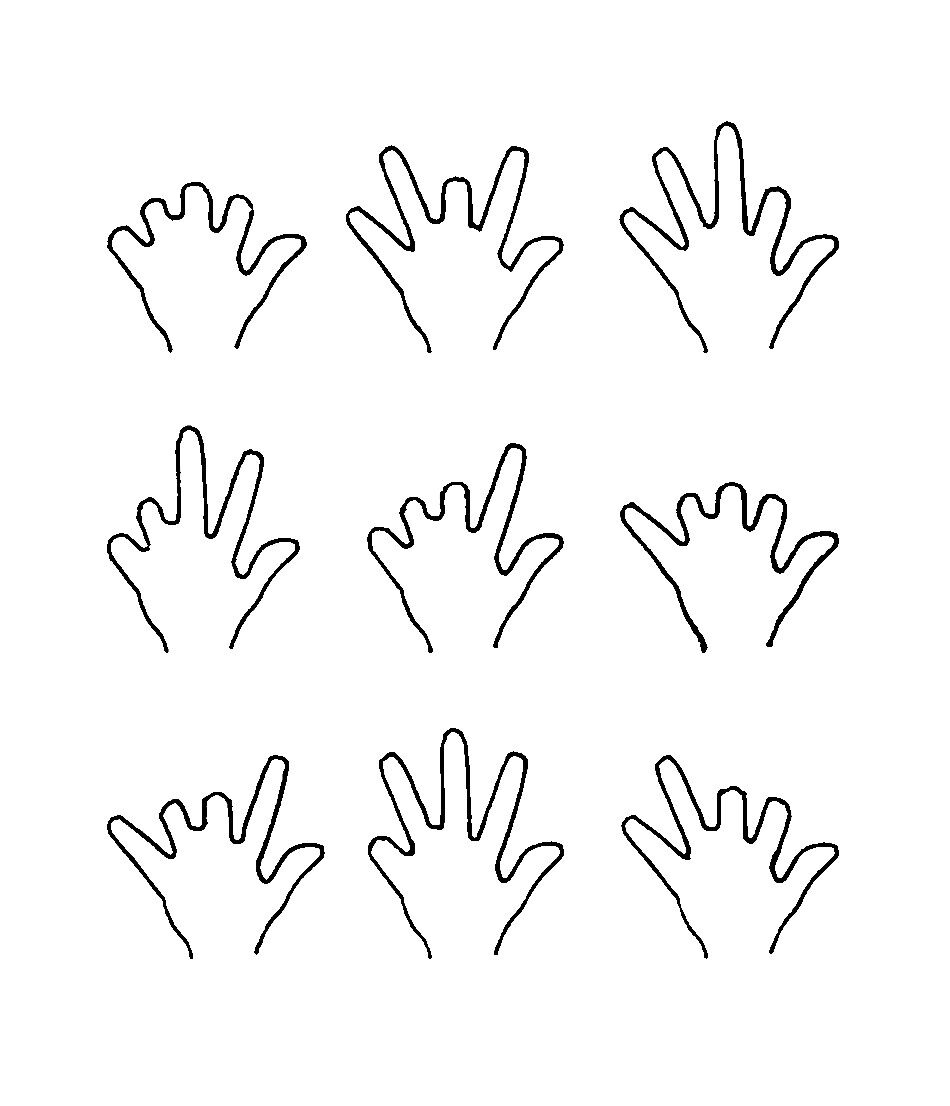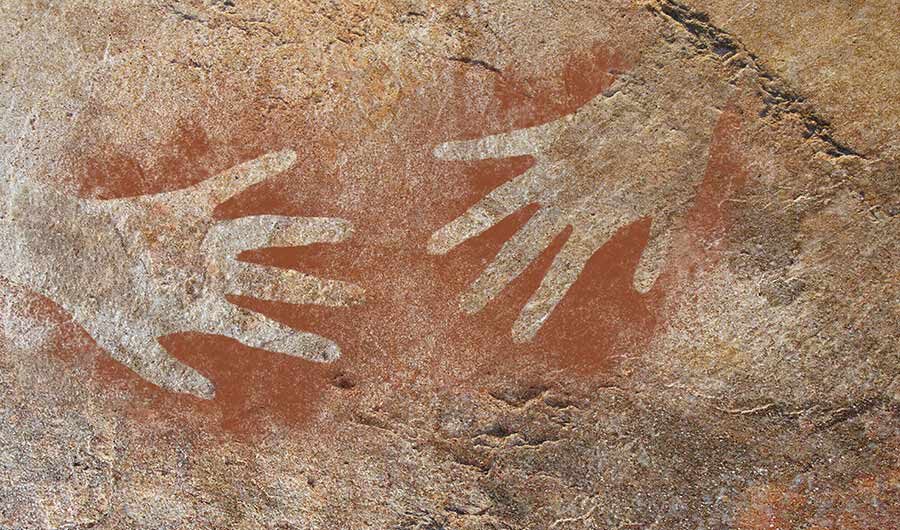Researchers have proposed grisly explanations for these absent digits: Perhaps the artists lost fingers to frostbite or disease, or perhaps they endured amputations for ritual purposes or punishment. But other experts have long argued that it's more likely they weren't missing any fingers at all. Instead, the stone age artists may have been folding their fingers down to make hand signs -- possibly humanity's earliest venture into writing on the wall.
Now, a pair of linguists at the IKER lab at the French National Centre for Scientific Research (CNRS) has weighed in on the debate, focusing on the hand stencils of Gargas Cave in France. All 92 stencils they analyzed correspond to hand positions that would be easy to make one-handed in the air, suggesting they would work well as components of a sign language. The findings from Gargas were published in March in the journal Philosophical Transactions of the Royal Society B. The researchers are now expanding their analysis to other caves in western Europe that also contain hand stencils, and so far they are finding the same pattern, according to Aritz Irurtzun, one of the researchers who conducted the study.
"This gives weight to the hypothesis that these represent a sort of sign language," said Irurtzun.
Stencils that could be signs
Gargas Cave holds an exceptional number and variety of hand stencils, with nine different configurations that involve at least one missing finger. The Gargas stencils were likely made around 30,000 to 35,000 years ago, a few thousand years after modern humans replaced Neanderthals in the region, according to Paul Pettitt, a paleolithic archaeologist at Durham University in the U.K. who was not involved in the study. Other caves may bear even older stencils, although some of the dates are controversial.
Irurtzun and his colleague Ricardo Etxepare reasoned that any finger arrangements used in a sign language will probably be easy to make in the air, without needing another surface or hand to help hold fingers in place. A much wider variety of hand arrangements could be easily stenciled, since stencilers can press folded fingers against the wall. Thus, if the finger-folding patterns were arbitrary or if the artists were really missing parts of fingers, the researchers would expect to see stencils of configurations that would not work well as signs.
The researchers analyzed all available photographs of stencils from Gargas cave that had been documented by a previous researcher. They used a classification system based on the arrangement of muscles in each finger. The system ranks hand positions from zero to four, with four being extremely difficult or impossible for most people to make unaided. In one example of a "four" position, the middle and pinky fingers are folded down while the thumb, index and ring fingers remain straight.
The researchers found no hand stencils in Gargas that ranked above a two. The most common position in the cave -- all fingers except the thumb folded down -- had an easy-peasy rank of zero.

For example, San people in Southern Africa use signs while hunting, when noise might spook their prey. Alternate sign languages have allowed Native American tribes with different spoken languages to communicate, and they are often used at times when cultures forbid speech, such as during silent rituals or periods of mourning. They have even arisen among factory workers who need to communicate in noisy environments, said Irurtzun.
Comment: Notably, researchers think these caves were considered sacred spaces by the prehistoric peoples who made the cave art.
Several of the configurations found in Gargas cave resemble signs from known sign languages. For example, Gargas has two stencils in which the ring and middle fingers are invisible while the thumb, pinky and index fingers are raised. That sign means "I love you" in American Sign Language. A similar sign with the thumb folded is used by the San to mean "antelope" and by some Aboriginal Australians to mean "bad person or thing"; heavy metal fans refer to it as "throwing the horns."
Folded or mutilated?
Karenleigh Overmann, a cognitive archaeologist at University of Colorado at Colorado Springs, applauded the new research.
"I think it's great that somebody is looking at these finger patterns and analyzing them not with the idea that they're mutilated, but with the idea that they could be communicative signs," she said.
Overmann has suggested that some stenciled hand shapes from the same cave may signify numbers. She used a different system to rank the difficulty of each finger arrangement, and one of the arrangements she considers difficult -- pinky finger down, all others up -- appears twice in Gargas. Still, she agrees that almost all of the hand positions in the cave are easy to make, and that pattern supports the idea that they are hand signs. In fact, she views the more difficult pinky-folded position as the exception that proves the rule: If her hypothesis about a stone age finger-counting system is correct, that position would be a natural part of the sequence, forming the number "four."
If the stencils do depict hand signs, it's impossible to say whether those signs were part of a language used by an entire culture or region, or whether they had a much narrower significance, Pettitt cautioned. "We can't rule out that this is actually the repeated hand stencils of a very few individuals," he said.
And not everyone finds the sign language hypothesis convincing. Brea McCauley, an archaeologist and doctoral student at Simon Fraser University in Canada, pointed out that many cultures have practiced finger amputation for non-medical reasons. There is also a handprint preserved in mud in Gargas Cave that appears to have shortened fingers, which she argues shouldn't be possible if the fingers were merely folded.
Various experts have noted that when people cut off healthy finger joints on purpose, they typically only target the pinky finger, which still leaves the hand mostly functional. Many of the stencils, in contrast, are much more drastic. However, there are examples of cultures with more extreme amputation customs, such the Dani people from West Papua, Indonesia, who cut off a portion of a finger when a close family member dies. Some Dani people end up losing all four fingers, similar to the most common configuration in Gargas Cave. But even Dani people preserve the thumb, according to McCauley. The Gargas stencils also all have thumbs.
Comment: The amputation hypothesis seems unlikely.
"If the hand configurations were mainly based on how easy they are to make in the air, I would think we would see patterns where the easiest finger to fold -- the thumb -- would be involved," wrote McCauley in an email.
Of course, no one alive today really knows what the haunting images mean. Where experts agree is that they held meaning to someone. It takes deliberate effort to create a stencil, far more than a simple handprint. Even the placement of the images was deliberate -- many are in hard-to-reach places, fitted to specific features of the cave, said Pettitt. Long ago, someone cared enough to venture deep into the darkness, press their hand to the rock, and leave a pattern that would last millennia.




Comment: See also:
- The strange 175,000-year-old circle structures built by Neanderthals in French cave
- Humans were in Europe earlier and had cultural interactions with Neanderthals, new fossil finds in Bulgaria reveal
- America Before by Graham Hancock - Book review
- World's oldest wooden statute the Shigir Idol discovered to be even older at 12,100 years old
- The enigmatic tablets from Late Bronze Age Deir 'Alla
And check out SOTT radio's: